Establishing degrees of closeness between audio recordings along different dimensions using large-scale cross-lingual models
Feb 08, 2024Maxime Fily, Guillaume Wisniewski, Severine Guillaume, Gilles Adda, Alexis Michaud
In the highly constrained context of low-resource language studies, we explore vector representations of speech from a pretrained model to determine their level of abstraction with regard to the audio signal. We propose a new unsupervised method using ABX tests on audio recordings with carefully curated metadata to shed light on the type of information present in the representations. ABX tests determine whether the representations computed by a multilingual speech model encode a given characteristic. Three experiments are devised: one on room acoustics aspects, one on linguistic genre, and one on phonetic aspects. The results confirm that the representations extracted from recordings with different linguistic/extra-linguistic characteristics differ along the same lines. Embedding more audio signal in one vector better discriminates extra-linguistic characteristics, whereas shorter snippets are better to distinguish segmental information. The method is fully unsupervised, potentially opening new research avenues for comparative work on under-documented languages.
Using Artificial French Data to Understand the Emergence of Gender Bias in Transformer Language Models
Oct 24, 2023Lina Conti, Guillaume Wisniewski
Numerous studies have demonstrated the ability of neural language models to learn various linguistic properties without direct supervision. This work takes an initial step towards exploring the less researched topic of how neural models discover linguistic properties of words, such as gender, as well as the rules governing their usage. We propose to use an artificial corpus generated by a PCFG based on French to precisely control the gender distribution in the training data and determine under which conditions a model correctly captures gender information or, on the contrary, appears gender-biased.
From `Snippet-lects' to Doculects and Dialects: Leveraging Neural Representations of Speech for Placing Audio Signals in a Language Landscape
May 29, 2023Séverine Guillaume, Guillaume Wisniewski, Alexis Michaud
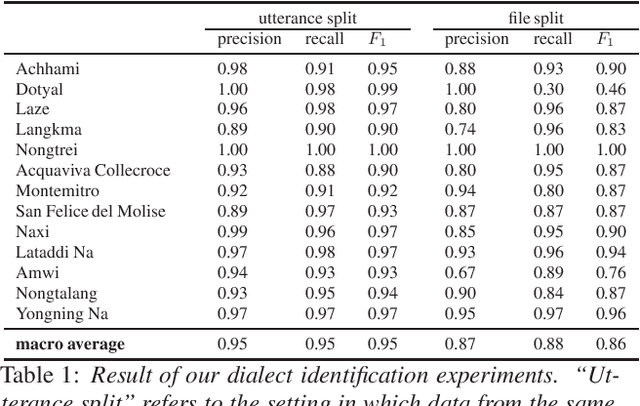
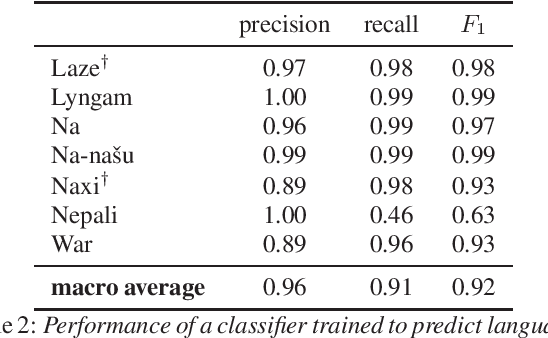
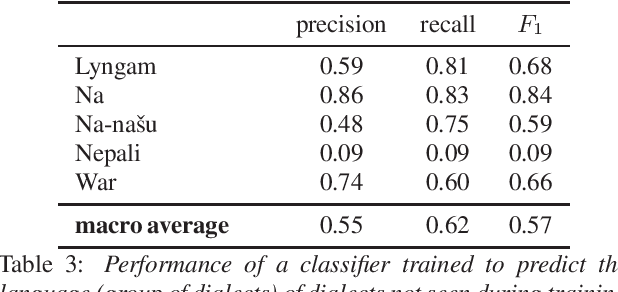
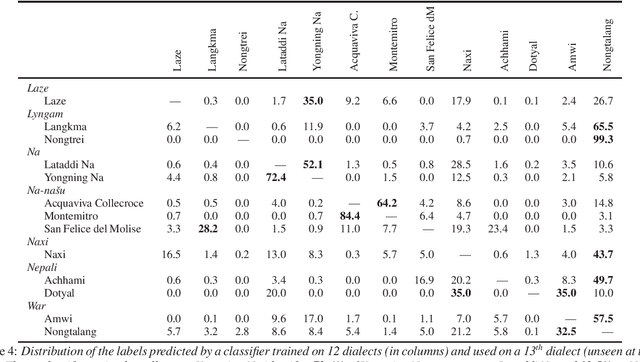
XLSR-53 a multilingual model of speech, builds a vector representation from audio, which allows for a range of computational treatments. The experiments reported here use this neural representation to estimate the degree of closeness between audio files, ultimately aiming to extract relevant linguistic properties. We use max-pooling to aggregate the neural representations from a "snippet-lect" (the speech in a 5-second audio snippet) to a "doculect" (the speech in a given resource), then to dialects and languages. We use data from corpora of 11 dialects belonging to 5 less-studied languages. Similarity measurements between the 11 corpora bring out greatest closeness between those that are known to be dialects of the same language. The findings suggest that (i) dialect/language can emerge among the various parameters characterizing audio files and (ii) estimates of overall phonetic/phonological closeness can be obtained for a little-resourced or fully unknown language. The findings help shed light on the type of information captured by neural representations of speech and how it can be extracted from these representations
ProsAudit, a prosodic benchmark for self-supervised speech models
Feb 24, 2023Maureen de Seyssel, Marvin Lavechin, Hadrien Titeux, Arthur Thomas, Gwendal Virlet, Andrea Santos Revilla, Guillaume Wisniewski, Bogdan Ludusan, Emmanuel Dupoux


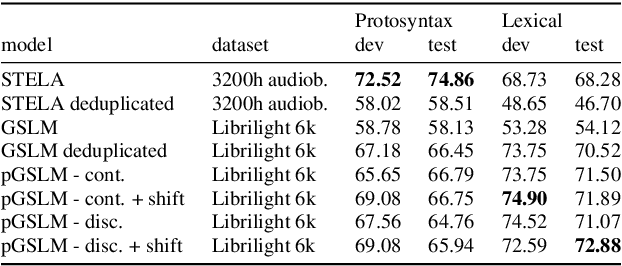

We present ProsAudit, a benchmark in English to assess structural prosodic knowledge in self-supervised learning (SSL) speech models. It consists of two subtasks, their corresponding metrics, an evaluation dataset. In the protosyntax task, the model must correctly identify strong versus weak prosodic boundaries. In the lexical task, the model needs to correctly distinguish between pauses inserted between words and within words. We also provide human evaluation scores on this benchmark. We evaluated a series of SSL models and found that they were all able to perform above chance on both tasks, even when trained on an unseen language. However, non-native models performed significantly worse than native ones on the lexical task, highlighting the importance of lexical knowledge in this task. We also found a clear effect of size with models trained on more data performing better in the two subtasks.
Assessing the Capacity of Transformer to Abstract Syntactic Representations: A Contrastive Analysis Based on Long-distance Agreement
Dec 08, 2022Bingzhi Li, Guillaume Wisniewski, Benoît Crabbé

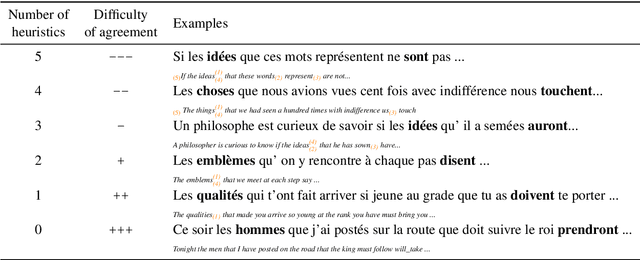
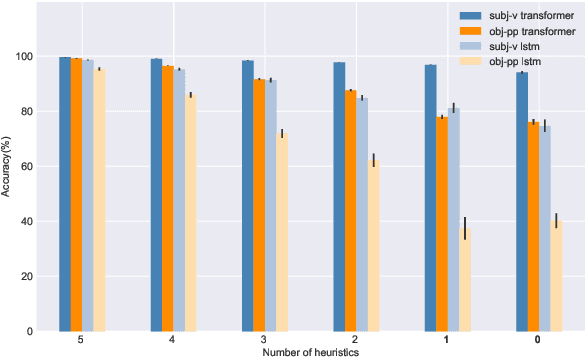
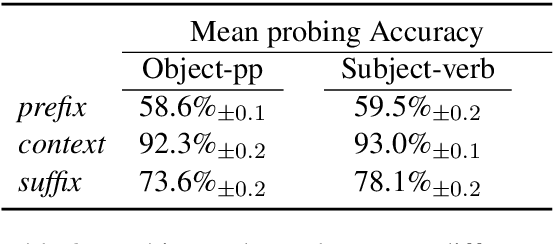
The long-distance agreement, evidence for syntactic structure, is increasingly used to assess the syntactic generalization of Neural Language Models. Much work has shown that transformers are capable of high accuracy in varied agreement tasks, but the mechanisms by which the models accomplish this behavior are still not well understood. To better understand transformers' internal working, this work contrasts how they handle two superficially similar but theoretically distinct agreement phenomena: subject-verb and object-past participle agreement in French. Using probing and counterfactual analysis methods, our experiments show that i) the agreement task suffers from several confounders which partially question the conclusions drawn so far and ii) transformers handle subject-verb and object-past participle agreements in a way that is consistent with their modeling in theoretical linguistics.
Is the Language Familiarity Effect gradual? A computational modelling approach
Jun 27, 2022Maureen de Seyssel, Guillaume Wisniewski, Emmanuel Dupoux
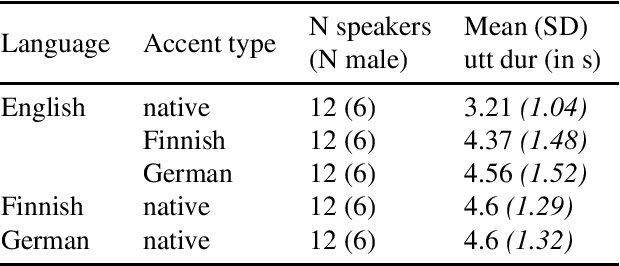
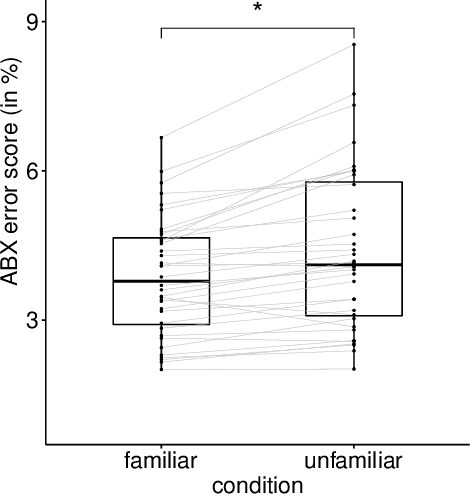
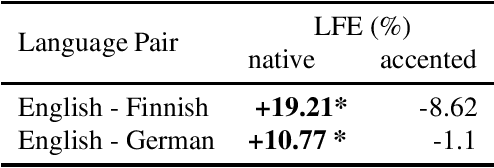
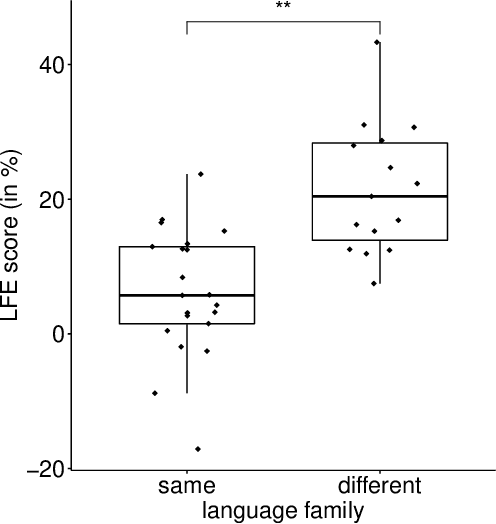
According to the Language Familiarity Effect (LFE), people are better at discriminating between speakers of their native language. Although this cognitive effect was largely studied in the literature, experiments have only been conducted on a limited number of language pairs and their results only show the presence of the effect without yielding a gradual measure that may vary across language pairs. In this work, we show that the computational model of LFE introduced by Thorburn, Feldmand and Schatz (2019) can address these two limitations. In a first experiment, we attest to this model's capacity to obtain a gradual measure of the LFE by replicating behavioural findings on native and accented speech. In a second experiment, we evaluate LFE on a large number of language pairs, including many which have never been tested on humans. We show that the effect is replicated across a wide array of languages, providing further evidence of its universality. Building on the gradual measure of LFE, we also show that languages belonging to the same family yield smaller scores, supporting the idea of an effect of language distance on LFE.
Probing phoneme, language and speaker information in unsupervised speech representations
Mar 30, 2022Maureen de Seyssel, Marvin Lavechin, Yossi Adi, Emmanuel Dupoux, Guillaume Wisniewski
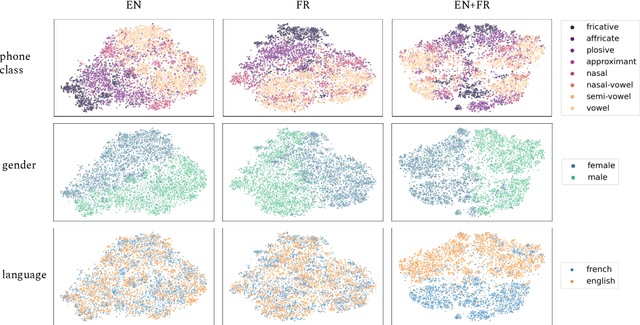

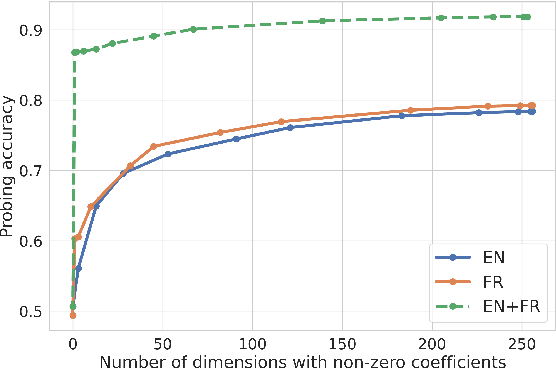

Unsupervised models of representations based on Contrastive Predictive Coding (CPC)[1] are primarily used in spoken language modelling in that they encode phonetic information. In this study, we ask what other types of information are present in CPC speech representations. We focus on three categories: phone class, gender and language, and compare monolingual and bilingual models. Using qualitative and quantitative tools, we find that both gender and phone class information are present in both types of models. Language information, however, is very salient in the bilingual model only, suggesting CPC models learn to discriminate languages when trained on multiple languages. Some language information can also be retrieved from monolingual models, but it is more diffused across all features. These patterns hold when analyses are carried on the discrete units from a downstream clustering model. However, although there is no effect of the number of target clusters on phone class and language information, more gender information is encoded with more clusters. Finally, we find that there is some cost to being exposed to two languages on a downstream phoneme discrimination task.
Mining Naturally-occurring Corrections and Paraphrases from Wikipedia's Revision History
Feb 25, 2022Aurélien Max, Guillaume Wisniewski

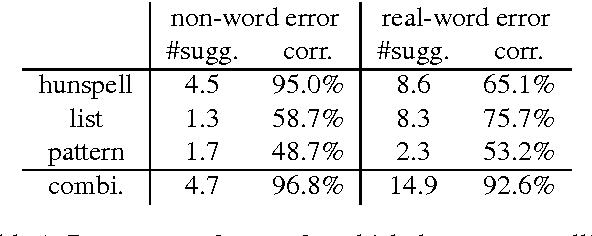
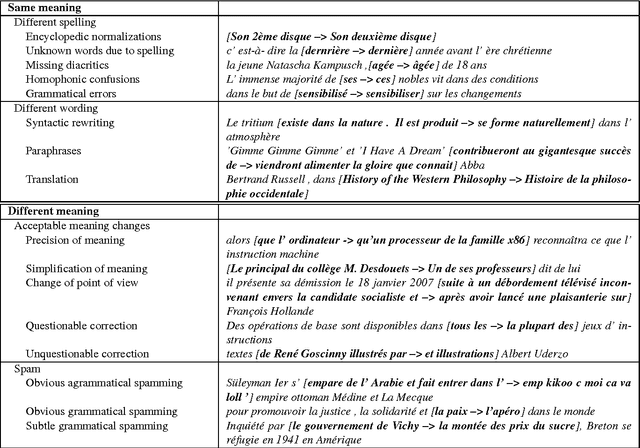
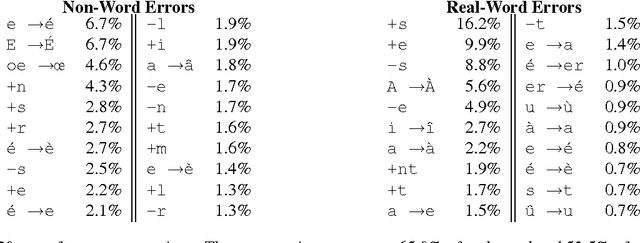
Naturally-occurring instances of linguistic phenomena are important both for training and for evaluating automatic processes on text. When available in large quantities, they also prove interesting material for linguistic studies. In this article, we present a new resource built from Wikipedia's revision history, called WiCoPaCo (Wikipedia Correction and Paraphrase Corpus), which contains numerous editings by human contributors, including various corrections and rewritings. We discuss the main motivations for building such a resource, describe how it was built and present initial applications on French.
Screening Gender Transfer in Neural Machine Translation
Feb 25, 2022Guillaume Wisniewski, Lichao Zhu, Nicolas Ballier, François Yvon
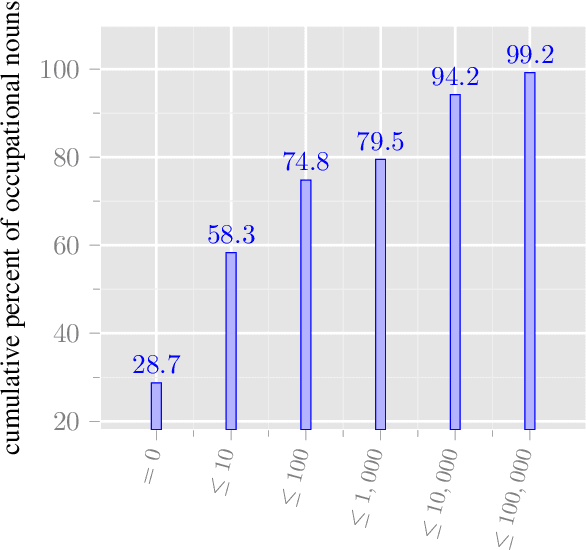
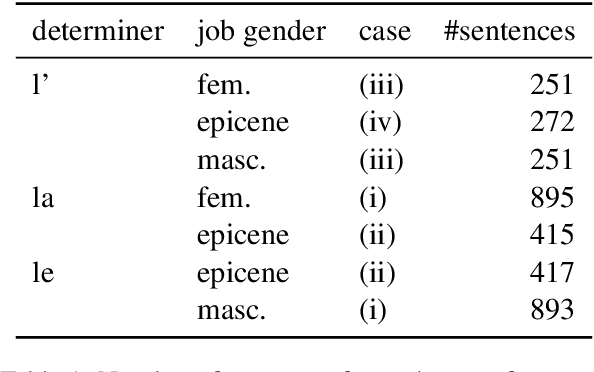
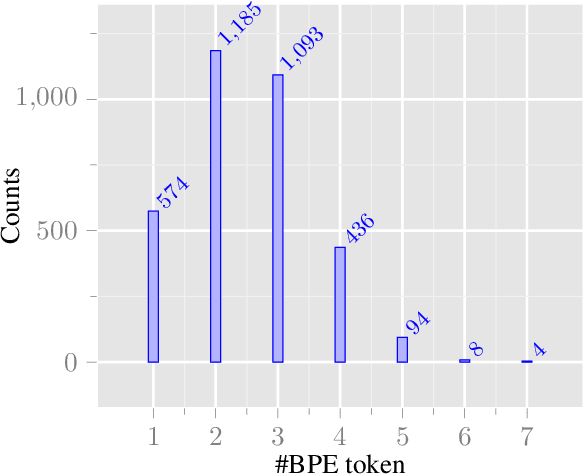
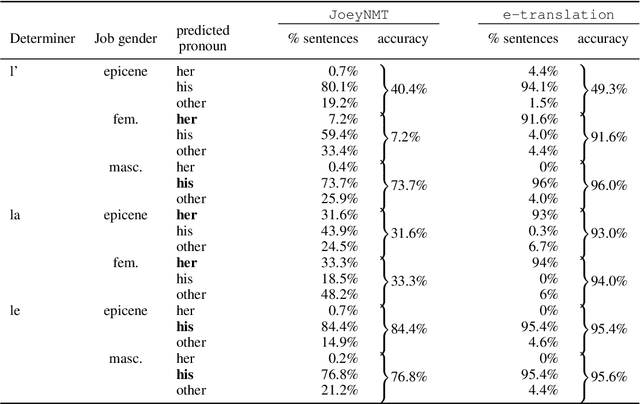
This paper aims at identifying the information flow in state-of-the-art machine translation systems, taking as example the transfer of gender when translating from French into English. Using a controlled set of examples, we experiment several ways to investigate how gender information circulates in a encoder-decoder architecture considering both probing techniques as well as interventions on the internal representations used in the MT system. Our results show that gender information can be found in all token representations built by the encoder and the decoder and lead us to conclude that there are multiple pathways for gender transfer.
Noisy UGC Translation at the Character Level: Revisiting Open-Vocabulary Capabilities and Robustness of Char-Based Models
Oct 24, 2021José Carlos Rosales Núñez, Guillaume Wisniewski, Djamé Seddah

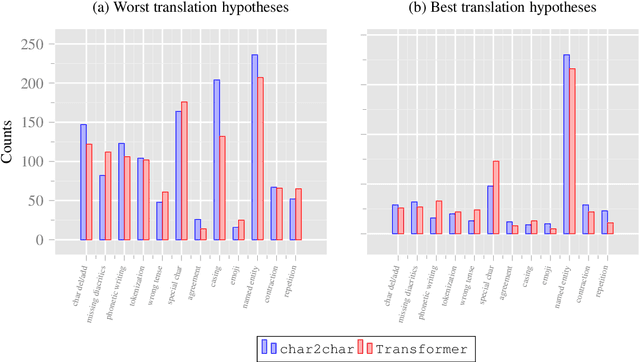

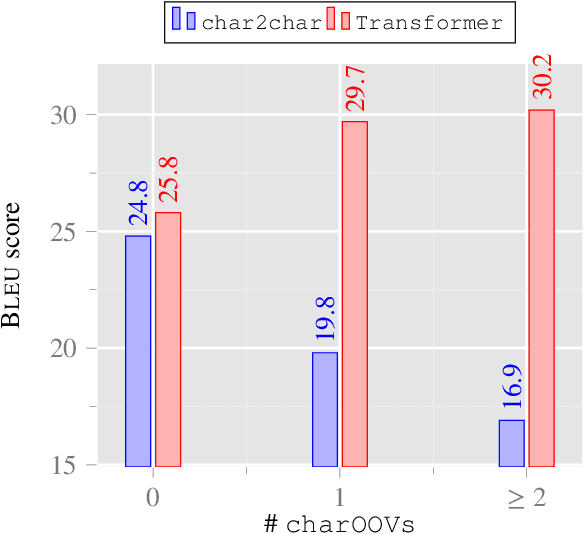
This work explores the capacities of character-based Neural Machine Translation to translate noisy User-Generated Content (UGC) with a strong focus on exploring the limits of such approaches to handle productive UGC phenomena, which almost by definition, cannot be seen at training time. Within a strict zero-shot scenario, we first study the detrimental impact on translation performance of various user-generated content phenomena on a small annotated dataset we developed, and then show that such models are indeed incapable of handling unknown letters, which leads to catastrophic translation failure once such characters are encountered. We further confirm this behavior with a simple, yet insightful, copy task experiment and highlight the importance of reducing the vocabulary size hyper-parameter to increase the robustness of character-based models for machine translation.
 Add to Chrome
Add to Chrome Add to Firefox
Add to Firefox Add to Edge
Add to Edge